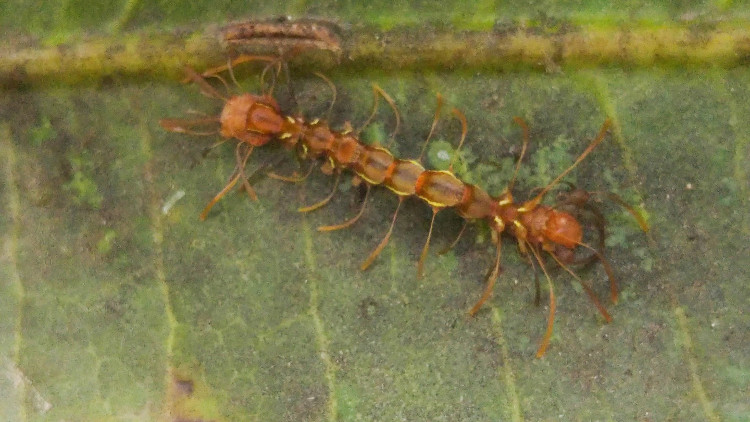Caterpillars fake ants tricking artificial intelligence
A website about natural images confuses Homodes bracteigutta with the ants due to its excellent camouflage.
of iNaturalist, a website to share and store natural images, mistaken Homodes bracteigutta as an ant, Newswee reported on 1/12.
The painter Franz Anthony discovered the child on a leaf that looked very much like two golden ants, from the color, the body faked the segment to the small strands that looked like ant legs. He took a picture of the animal and posted it to iNaturalist to try to determine what animal it is. This website replied that it belongs to the Vespoidea family and gives a hint image of a golden ant.

Homodes moth bracteigutta camouflaged gold prejudice.(Photo: Newsweek).
However, thanks to the help of experts, Anthony identified this as essentially Homodes bracteigutta . After going through the larval stage, it pretends to be a golden ant before becoming a moth. The predators pay less attention to weaver ants than caterpillars because ants eat well and have nasty stings.
In addition to Homodes bracteigutta, there are two other spider species that also pretend to be golden ants. In the world, there are at least several hundred species of spiders disguising themselves as other ant species. Another reason why they are disguised as such is to avoid being bitten by ants. If another creature invades, the ants can gather and attack the large animal.
When experts at Newsweek tried to test some other animals with iNaturalist's artificial intelligence, the results were impressive. This website guesses the right species or genus of 17 animals out of 24 randomly posted images.
iNaturalist identifies common animals such as domestic cats or cattle, even some less known species such as beetles Alaus oculatus and. However, it identifies the beluga sturgeon as a mistake or a dog.
- Nvidia's new AI creates incredibly fake fake videos
- Caterpillars fake snakes escaping predators
- What is Artificial Intelligence? What is AI (artificial intelligence)?
- How do caterpillars turn into bodyguards?
- China wants to dominate global artificial intelligence
- IBM's artificial intelligence invented new perfumes
- The United States allows the use of artificial intelligence to diagnose diseases
- Artificial Intelligence detects 85% of network attacks, becoming smarter
- Artificial intelligence: Development history and future potential
- Artificial intelligence has learned how to create another artificial intelligence
- Admire the faces created by artificial intelligence
- Artificial Intelligence is ready to launch
 Why do potatoes have eyes?
Why do potatoes have eyes? 'Tragedy' the world's largest carnivorous life: Death becomes ... public toilet
'Tragedy' the world's largest carnivorous life: Death becomes ... public toilet Tomatoes were once considered 'poisonous' for 200 years
Tomatoes were once considered 'poisonous' for 200 years Detecting microscopic parasites on human face
Detecting microscopic parasites on human face